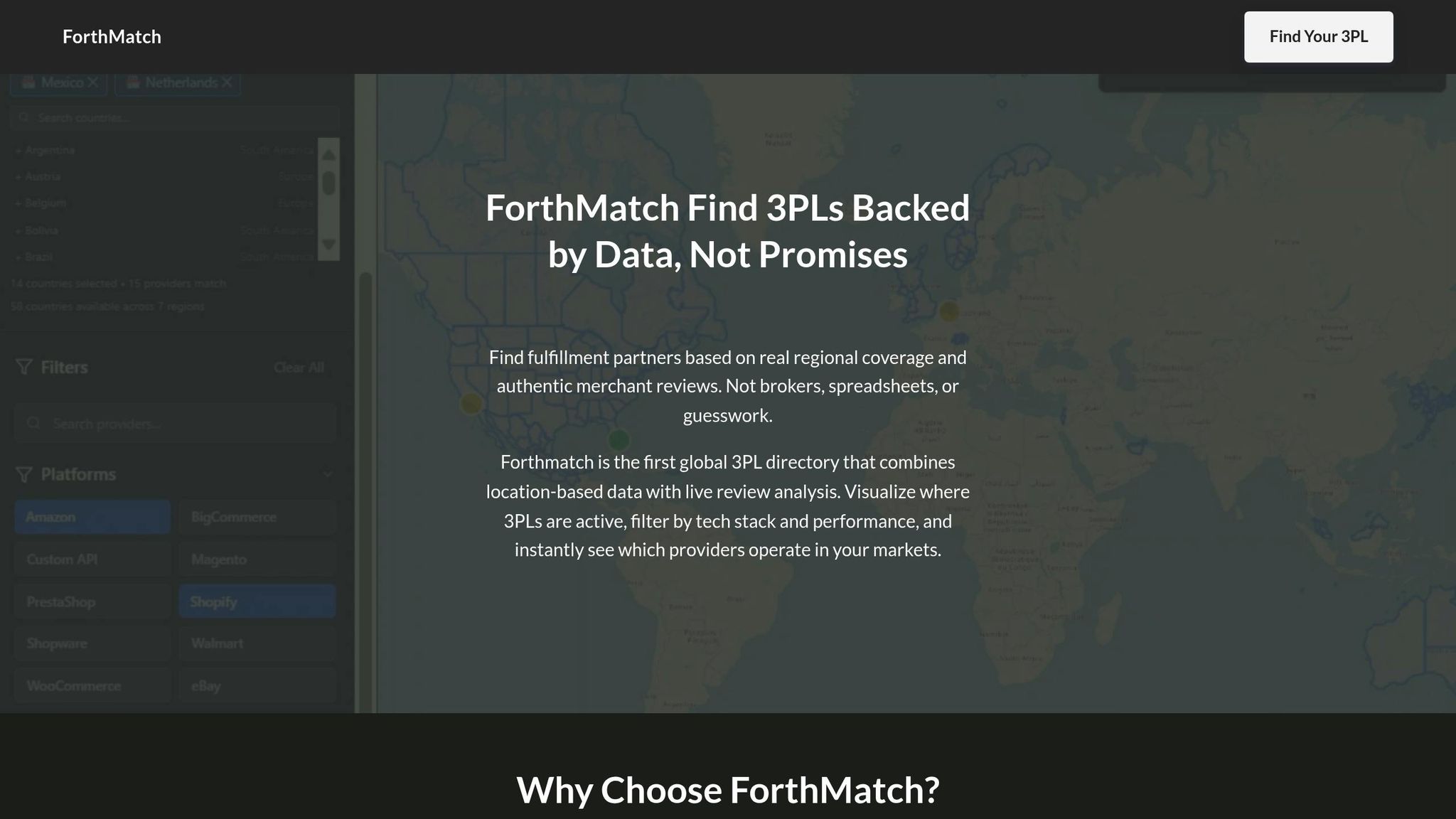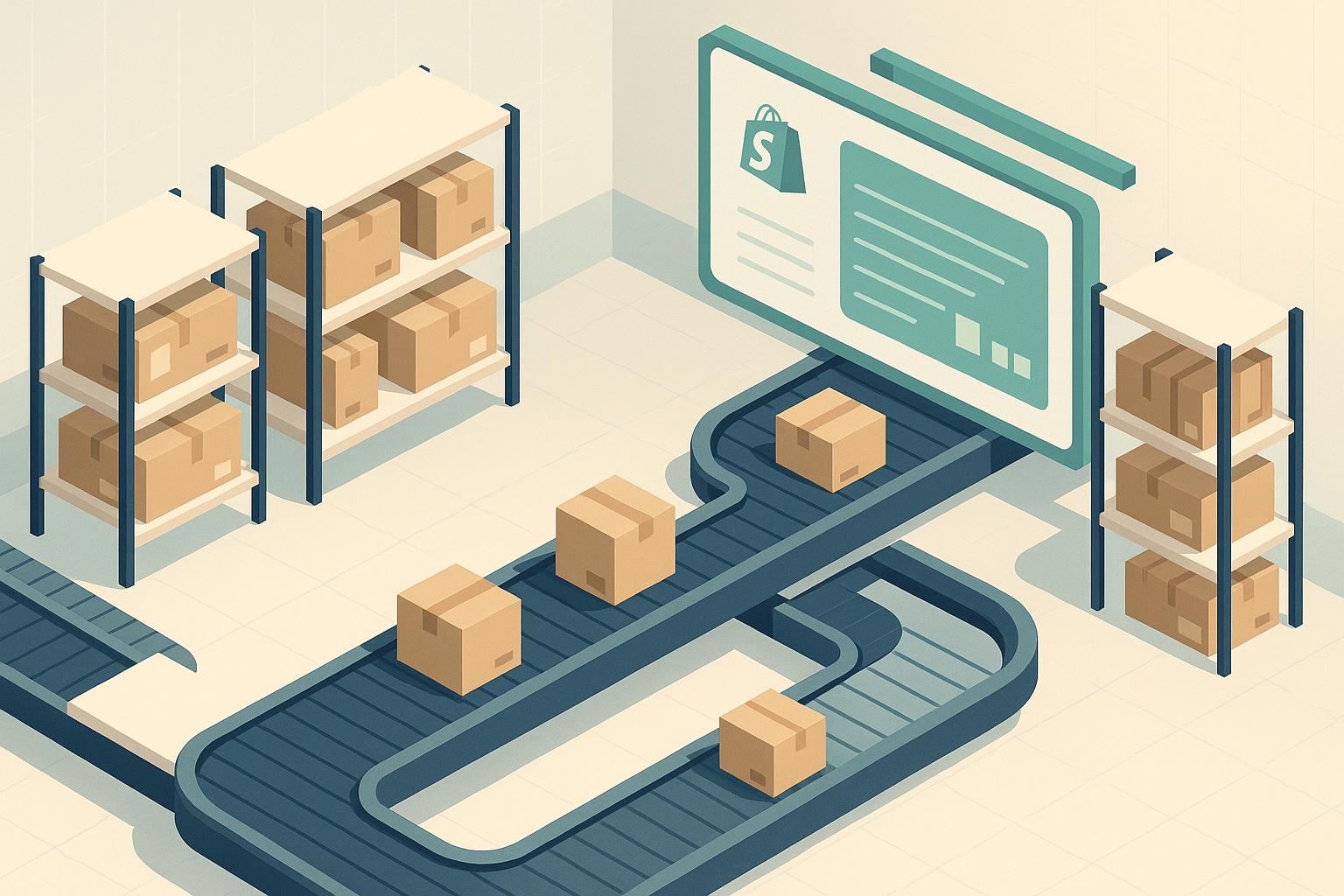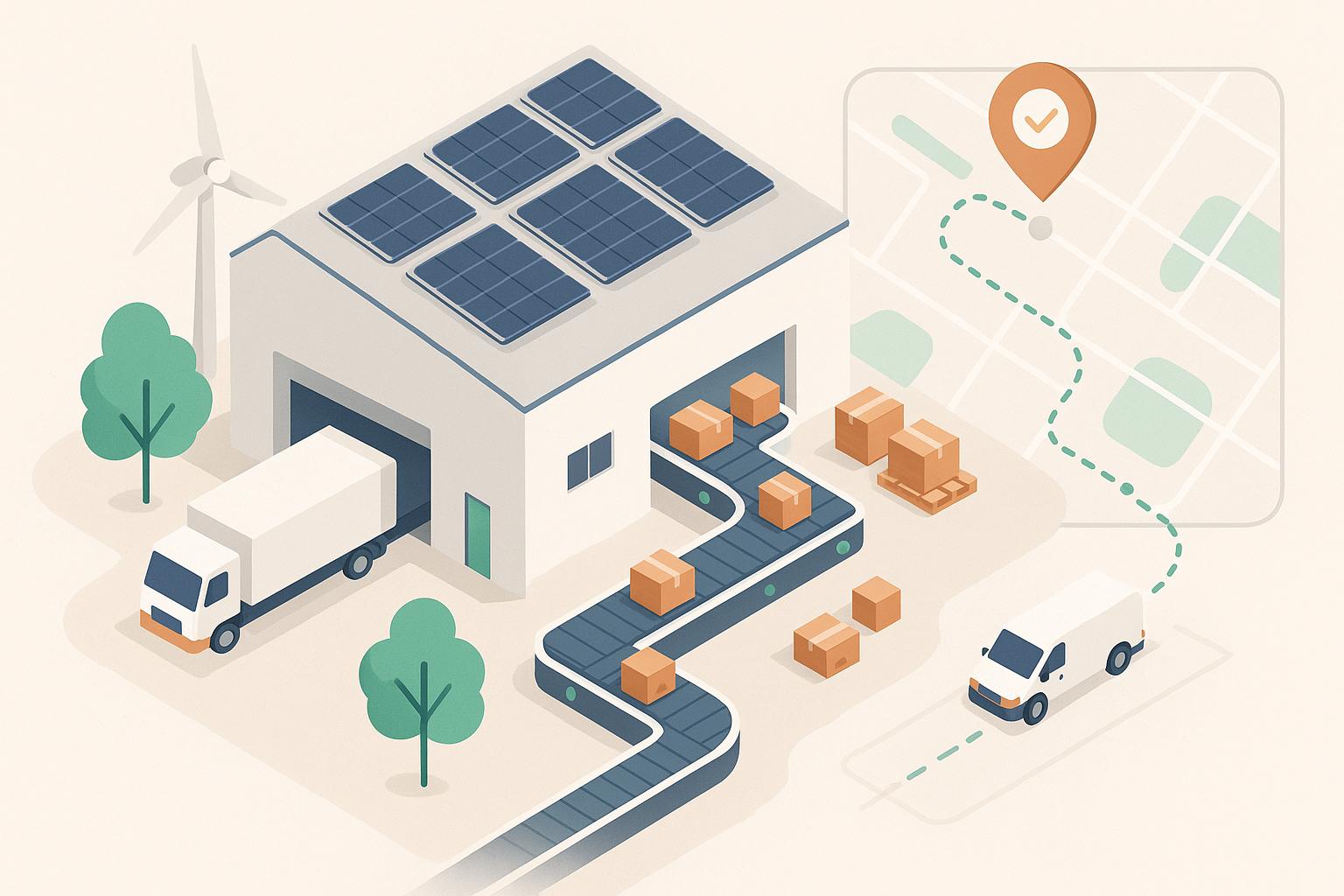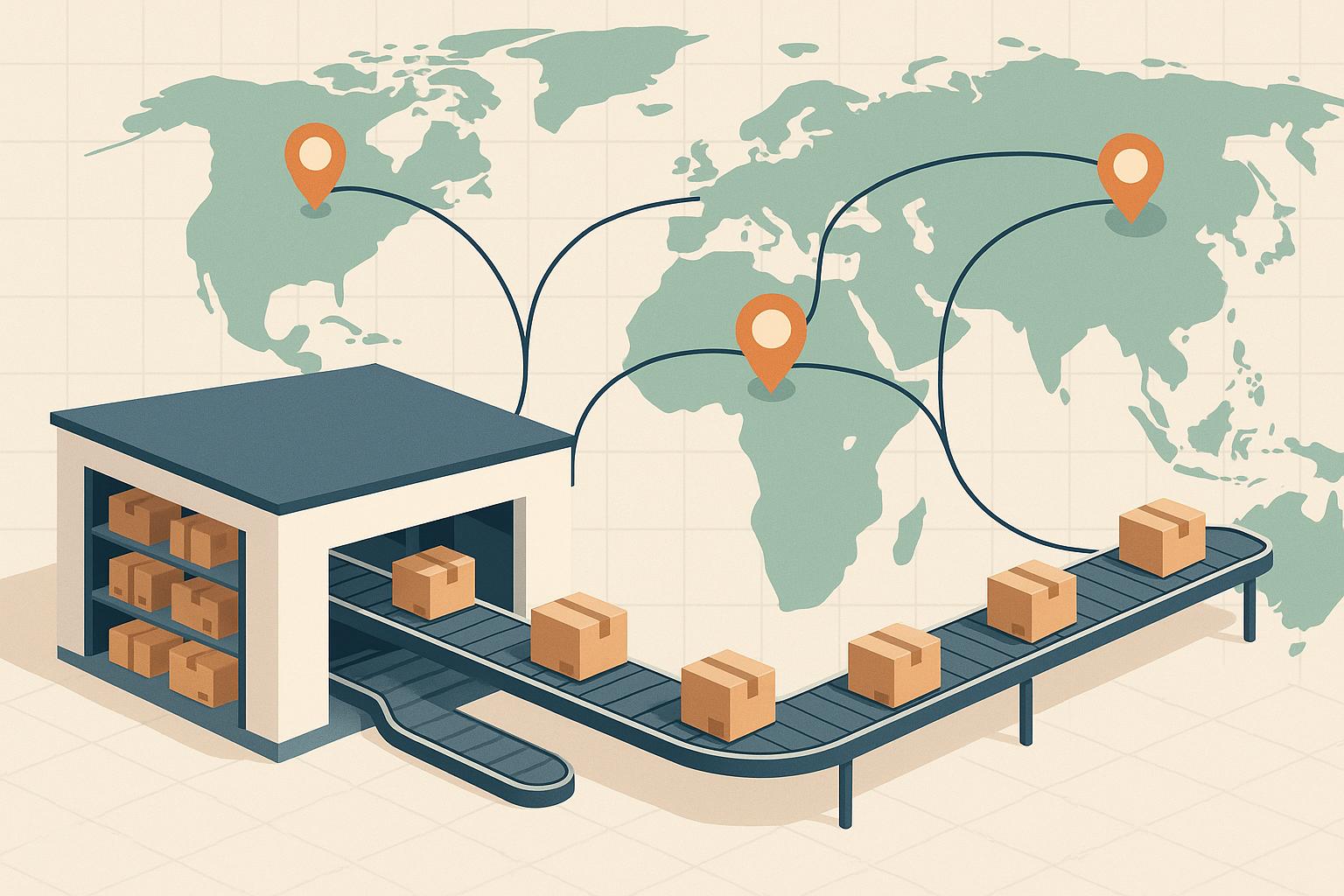Programmatic negotiation is transforming how businesses select third-party logistics (3PL) providers. Instead of relying on slow, manual processes like emails and sales calls, this approach uses automation, structured data, and machine-readable systems to simplify and speed up decision-making. Here's what you need to know:
- What it is: A data-driven method to evaluate and onboard 3PLs using standardized metrics, machine-readable SLAs, and automated comparisons.
- Why it matters: It reduces delays, eliminates inefficiencies, and provides clear, objective criteria for selecting logistics partners.
- Key benefits: Faster decisions, lower costs, and improved scalability for growing eCommerce brands.
- How it works: Combines tools like AI, real-time tracking, and automated contract handling to streamline operations.
For eCommerce brands, programmatic negotiation is a smarter way to manage logistics partnerships, ensuring speed, transparency, and better outcomes.
How to Negotiate with Software Vendors [ERP, HCM, and CRM Contract Negotiation Advice]
How 3PL Selection is Moving from Manual to Automated
The logistics industry is undergoing a major transformation. For decades, traditional methods of selecting third-party logistics (3PL) providers have been the norm. But now, these manual approaches are being replaced by automated, data-driven systems. This shift isn't just about adopting new tools - it's about rethinking how direct-to-consumer (DTC) brands find, evaluate, and collaborate with logistics partners. Automation is setting the stage for smarter, data-backed negotiations.
Problems with Traditional 3PL Selection Methods
Choosing the right logistics provider has always been tricky, thanks to variables like shipping costs, delivery times, geographic coverage, and service reliability. Outdated processes make these challenges even harder to tackle. Traditional methods often lack the flexibility and analytical tools needed to handle complex datasets effectively.
Hidden fees and unclear pricing structures in traditional agreements can eat into profits and make forecasting difficult. Additionally, some 3PLs rely on outdated technology and inefficient processes, which can lead to slow order processing, integration headaches, more errors, and limited operational visibility. These issues become even more pronounced during peak shopping periods like Black Friday or Cyber Monday. During such times, unprepared 3PLs may face warehouse bottlenecks, delays in processing orders, or inventory mismanagement, all of which can prevent brands from maximizing sales opportunities.
Inconsistent performance from logistics providers can hurt both a brand's reputation and its bottom line. Common mistakes - like incorrect order picking, mislabeled shipments, damaged packaging, or late deliveries - frustrate customers, increase return rates, and add extra costs. And with 86% of shoppers willing to pay more for a better experience, these missteps carry real consequences.
How Automation Changes Logistics Decision-Making
Automation is rewriting the rules for 3PL selection by offering speed, clarity, and precision. Several technologies are driving this change, transforming how logistics decisions are made. Artificial intelligence (AI) is improving supply chain visibility, enabling real-time risk assessments and automating compliance tasks. Cloud-based transportation management systems provide features like real-time tracking, automated scheduling, and dynamic routing. Meanwhile, digital freight matching platforms optimize truck usage by connecting loads with carriers in real time, reducing empty miles.
AI tools are also speeding up decision-making. For instance, AI applied to carrier contracts can cut handling time by 75%. Predictive analytics use historical data and AI models to anticipate demand shifts, helping businesses manage inventory more effectively and avoid stockouts.
However, automation isn't replacing the human element - it’s enhancing it. Kevin Nolan, founder of Nolan Transportation Group and Sope Creek Capital, puts it this way:
AI isn't going to win business, but it will make humans so much more efficient in what they are working on
. This increased efficiency allows logistics professionals to focus on strategic, high-value decisions instead of time-consuming administrative tasks. Julius Rusnak, COO of Semantic Visions, echoes this sentiment:
AI is an enabler, unlocking new possibilities that were previously unimaginable. … These systems don't just optimize existing workflows, they inspire leaders to rethink their current strategies
.
The shift to automation is already making waves. Fifty-five percent of supply chain leaders plan to increase their investments in AI-based tools to improve supply chain visibility. These investments not only enhance operational transparency but also pave the way for more effective, data-driven negotiations with 3PL providers. On top of that, logistics automation improves the customer experience by enabling faster order processing and real-time shipment tracking. By automating 3PL selection, brands can quickly identify providers that offer these advanced capabilities, ensuring smoother operations and happier customers.
Key Components of Programmatic Negotiation
Programmatic negotiation is built on three essential elements that reshape how eCommerce brands collaborate with 3PL providers. These components streamline data exchange, enable quicker decision-making, and remove human bottlenecks. Together, they enhance the automation themes previously discussed and redefine every step of 3PL selection.
Machine-Readable SLAs and Contract Terms
Traditional service level agreements (SLAs) are designed for human interpretation, often filled with legal jargon and inconsistent formatting. This makes them difficult for automated systems to process. Machine-readable SLAs, on the other hand, reformat contract terms into standardized structures that software can easily parse, compare, and act upon.
In logistics, an SLA is a contract between a logistics provider and a customer, outlining expected service levels, specific performance metrics, roles, and responsibilities. Without an SLA, measuring the success of the partnership becomes difficult. By converting SLAs into machine-readable formats, brands gain the ability to automatically monitor compliance, flag performance issues, and even adjust contracts - all without manual intervention.
Key elements that benefit from this approach include performance thresholds (e.g., maintaining inventory accuracy rates of 97% or higher), shipping speed commitments, geographic coverage, and fee structures. Automated systems can instantly compare these metrics across multiple providers, enabling more efficient operations and precise partner matching.
Structured Performance Data and Trust Indicators
Building on machine-readable SLAs, structured performance data ensures objective and consistent evaluations. Raw data is of little use without standardization. Programmatic negotiation relies on performance data formatted uniformly, allowing automated systems to analyze and compare 3PL providers effectively.
Standardized data provides context that traditional evaluation methods often overlook, such as trends in delivery performance, seasonal capacity changes, and service quality patterns. Trust indicators - like verified customer reviews, financial stability scores, compliance certifications, and operational history - also become critical. When standardized, these indicators allow automated systems to process trust scores, conduct sentiment analysis, and rank providers based on comprehensive benchmarks.
As Pratik Thakker from Digital Advertising Ecosystem explains:
The lack of transparency in programmatic is a major problem faced by publishers today. The ability to reveal data that would otherwise be left unseen, and may affect the overall advertising performance, is critical to most publishers and can be a true game-changer to those who utilize it.
Transparency, a key factor in programmatic advertising achieved through deal IDs, offers similar benefits here, helping all parties understand the specifics of what is being offered.
Standardized Offer Formats for Automated Systems
The final piece of programmatic negotiation involves standardizing how offers and responses are exchanged between brands and 3PL providers. Traditional negotiations, with custom proposals, back-and-forth emails, and inconsistent pricing formats, make comparisons cumbersome. Standardized offer formats solve this issue by creating templates that automated systems can easily generate, send, and evaluate.
These templates typically include structured pricing models, service details, capacity availability, and terms and conditions, all formatted for instant processing by software. When a brand sends out a request for logistics services, it receives responses in a uniform format, enabling automated comparison and selection.
This level of standardization has revolutionized industries like programmatic advertising. In 3PL selection, it allows brands to test different service combinations, negotiate volume discounts based on projected shipping needs, and handle routine decisions without human involvement. Requests for services can be sent to multiple providers, with comparable proposals returned in just hours.
When combined - machine-readable SLAs, structured performance data, and standardized offer formats - these components create a system where 3PL partnerships are evaluated, negotiated, and finalized with unmatched speed and precision. These elements set the stage for the implementation strategies discussed in later sections.
Forthmatch: Enabling Programmatic 3PL Partnerships

Forthmatch takes the advancements in automation and applies them to streamline 3PL partnerships for eCommerce brands in the United States. This platform offers practical tools that simplify and accelerate the process of finding and partnering with third-party logistics providers.
As a free, global directory of 3PL providers, Forthmatch removes the manual hurdles often associated with traditional logistics partner selection. By eliminating brokers, quote forms, and long email chains, the platform provides direct, data-driven access to essential 3PL information. Its system is designed to handle machine-readable formats and structured data exchanges, allowing brands to make faster, objective decisions. This approach brings programmatic negotiation into the logistics space, making 3PL partnerships more efficient and transparent.
Direct 3PL Discovery and Comparison Tools
Forthmatch’s core features include tools that make discovering and comparing 3PL providers effortless. The platform offers real-time service area mapping using isochrones and isodistances, which visually outline the delivery zones each 3PL can cover within 30–60 minutes. This level of detail ensures brands can identify providers that align with their geographic needs.
Advanced search and filtering options allow businesses to refine their choices based on operational criteria. Whether it’s regional coverage, compatibility with platforms like Shopify, WooCommerce, or Amazon, or specific logistics specialties, Forthmatch helps merchants zero in on the right partners quickly. Plus, the platform operates with a zero broker fee model, meaning brands connect directly with 3PL providers without paying referral markups or hidden charges.
Data-Based Trust Scoring System
To help brands make informed decisions, Forthmatch uses a trust scoring system driven by data. By analyzing community reviews, sentiment analysis from sources like Google and Trustpilot, and other web mentions, the platform generates objective trust scores. These scores combine factors like public reputation, domain credibility, and performance metrics, giving businesses a standardized way to evaluate 3PL providers. This data-driven approach ensures decisions are based on measurable insights rather than subjective opinions.
Features for US-Based eCommerce Brands
Forthmatch is specifically optimized for US-based eCommerce businesses. The platform displays pricing in USD, uses the MM/DD/YYYY date format, and measures distances in miles - ensuring compatibility with domestic systems and practices.
Transparency is another key focus. Forthmatch provides detailed 3PL profiles that include capability overviews, verified contact information, and clear pricing - all accessible without intermediary fees. For brands looking to integrate 3PL selection into their broader supply chain management, the platform offers robust API documentation and structured data formats. These features support automated workflows, making it easier for businesses to fully embrace programmatic negotiation and streamline their logistics operations.
sbb-itb-eb0f906
Programmatic vs Traditional 3PL Negotiation: Side-by-Side Comparison
Programmatic negotiation has completely changed the game for selecting third-party logistics (3PL) providers, slashing the time and effort that traditional methods demand. Traditional approaches are often bogged down by lengthy back-and-forth communications, dragging decisions out for 30 to 60 days. In contrast, automation simplifies quoting, booking, and paperwork, shaving days off shipment cycles. With digital freight platforms offering real-time pricing and booking, what once required hours of phone calls and emails now happens in moments.
The financial impact is equally impressive. Convoy reduced its cost-per-load by about 40% through automation, allowing for more competitive bids. This demonstrates how programmatic negotiation not only saves time but also delivers measurable cost savings while cutting down on operational inefficiencies.
Scalability is another area where programmatic systems shine. Traditional methods require more human resources as business volumes grow. Programmatic systems, on the other hand, can handle multiple 3PL evaluations simultaneously without needing additional staff.
Main Differences Between Both Approaches
Here’s a closer look at how programmatic negotiation stacks up against traditional methods:
| Criteria | Programmatic Negotiation | Traditional Negotiation |
|---|---|---|
| Speed | Instant decisions via automation | Lengthy processes |
| Transparency | Standardized, clear data | Limited visibility |
| Human Input | Minimal or autonomous | High |
| Data Accessibility | API-readable, structured | Scattered, unstructured |
| Cost | Lower operational costs | Higher due to manual workflows |
| Trust Signals | Data-driven, verifiable metrics | Subjective, inconsistent |
| Customization | Scalable, dynamic formats | Rigid, slow to adapt |
This comparison underscores how automation not only speeds up the selection process but also ensures decisions are based on reliable, data-driven insights.
Programmatic systems go beyond just selection. AI can automate up to 80% of repetitive customs tasks, reducing errors and speeding up approvals. Traditional methods, in contrast, depend heavily on subjective evaluations, while automated systems rely on objective, verifiable metrics.
The logistics industry is clearly moving in this direction. The digital freight forwarding market in North America is projected to exceed $42 billion by 2025, reflecting the growing adoption of automated solutions.
"These next-generation players and their service portfolios are defined by speed, agility, adaptability, and continuous improvement." – Gary Frantz, Contributing Editor of DC Velocity
Flexibility is another key advantage. Traditional contracts and relationships often struggle to adapt to changing needs or pricing. Programmatic systems, however, allow for dynamic adjustments based on real-time performance data and market trends.
For US-based eCommerce brands, these differences translate into tangible benefits: faster 3PL selection, lower administrative costs, and more time to focus on core business activities rather than logistics management. It’s clear that programmatic negotiation is becoming a critical tool for staying competitive in an increasingly fast-paced market.
How to Implement Programmatic Negotiation in Your Business
Switching from traditional methods to programmatic negotiation can speed up logistics decisions and create clear, data-driven partnerships. To make this transition successful, you’ll need a structured approach that tackles inefficiencies, uses the right technology, and establishes clear automated decision criteria. Here’s how to rework your process for better results.
Review Your Current Process and Identify Issues
Start by auditing your 3PL (third-party logistics) selection process. Map out every step, from initial research to signing contracts, and note where delays or inefficiencies occur. Many direct-to-consumer (DTC) brands find they’re spending way too much time on manual logistics tasks that could easily be automated.
Look for specific problem areas like fragmented communication, manual data entry across systems, or repeated requests for the same information from different providers. These are clear opportunities for automation. Also, consider where you might be losing visibility into performance metrics or struggling to compare providers fairly - whether it’s evaluating trust signals, pricing models, or service level agreements (SLAs).
"A data-driven strategy is essential for 3PL providers to enhance efficiency and maintain a competitive edge". The same holds true for businesses selecting these providers.
Think about the hidden costs of your current system: time spent managing logistics instead of growing your business, delays in decision-making, and missed revenue from less-than-ideal 3PL partnerships. Often, these costs show that investing in programmatic tools can pay off within just a few months.
Choose Platforms That Automate and Simplify
Once you’ve identified inefficiencies, it’s time to choose the right tools to address them. Programmatic negotiation relies on platforms that support API-readability, standardized data formats, and transparent provider discovery. These tools should eliminate the need for traditional brokers and give you direct access to vetted 3PL providers with clear performance metrics.
For example, Forthmatch offers real-time service area maps, filters based on features, and direct contact with 3PLs - without hidden fees or markups. Its trust scoring system uses public reputation data and domain-specific metrics to provide objective evaluations that automated systems can process.
When selecting a platform, focus on how well it integrates with your current tech stack. It should connect seamlessly with tools like your eCommerce platform, inventory management system, and customer service software. You might also want to consider working with multiple vendors to increase your negotiating power. Engage your team early in the process to ensure everyone’s priorities are aligned.
Create Machine-Readable SLA Standards
Drafting machine-readable SLAs is one of the most important steps in setting up programmatic negotiation. These agreements should clearly define key performance indicators (KPIs), responsibilities, and escalation protocols. Include details like service scope, performance metrics, and termination conditions so automated systems can monitor compliance in real time.
"Effective SLAs are characterized by clarity, measurability, mutual agreement, and flexibility".
Start with high-level summaries that outline objectives, service scope, timelines, and responsibilities. For each service component, include measurable KPIs such as shipping methods, delivery times, integration requirements, and cybersecurity protocols.
Set clear reporting intervals, assign responsibilities, and define steps for escalating issues. Include specific grounds for termination and penalties for SLA failures, all in formats that automated systems can track and enforce.
"SLAs should be dynamic, not static, and reviewed periodically to align with changing business needs".
Plan for regular reviews - quarterly assessments and seasonal updates - to ensure your SLAs stay relevant. This flexibility allows your programmatic systems to adapt to real-time performance data and shifts in market trends.
"Digital transformation enables greater connectivity, visibility, and agility, allowing organizations to respond swiftly to changing conditions and maintain high service levels".
By building this adaptability into your SLA standards, you’ll create a system that can adjust automatically to ensure consistent performance.
While transitioning to programmatic negotiation does require an upfront investment, the long-term benefits are hard to ignore. Businesses that make this shift can scale faster, make smarter logistics decisions, and free up their teams to focus on strategic growth rather than administrative tasks.
Conclusion: What's Next for 3PL Negotiation
The move toward programmatic negotiation is reshaping how DTC brands manage their logistics partnerships. Gone are the days of relying on lengthy email chains, phone calls, and manual comparisons. Instead, brands are turning to automated, data-driven systems that make quicker decisions and deliver better results. This shift not only simplifies the negotiation process but also lays the groundwork for future advancements in logistics.
The impact is clear when you look at the numbers. For example, programmatic tools can instantly identify pricing discrepancies, like spotting storage costs quoted at $15 per pallet when the actual market rate is closer to $12. These tools don’t just save money - they also improve efficiency.
Given these advantages, adopting programmatic negotiation is becoming a must. And the timing couldn’t be more ideal. As eCommerce expands and customers demand faster, more reliable deliveries, manual logistics processes are becoming less practical. Companies like Forthmatch are breaking down traditional barriers with features such as 100% independent rankings and no referral fees. Tools like isochrone mapping help brands identify which 3PLs can deliver to specific regions within set timeframes, while sentiment analysis and real-time reviews provide an extra layer of trust.
As the market grows more demanding and manual methods fall behind, adapting is no longer optional. Start by evaluating your current 3PL processes to identify bottlenecks and inefficiencies. Look for platforms that support API-readable data formats and offer direct access to vetted providers without hidden broker fees. Begin creating machine-readable SLA standards that automated systems can track and enforce.
The future of 3PL partnerships is all about transparency, efficiency, and automation. By embracing programmatic negotiation now, your brand will be ready to thrive in a logistics landscape driven by agility and data-powered precision.
FAQs
How does programmatic negotiation make selecting third-party logistics providers faster and more efficient?
Programmatic negotiation simplifies how ecommerce brands select third-party logistics (3PL) providers by swapping out tedious manual tasks - like filling out forms, sending countless emails, and enduring long sales calls - for automated, data-driven systems. With structured data that's compatible with APIs, businesses can swiftly assess service-level agreements (SLAs), trust indicators, and contract terms without the delays that come with human involvement.
This method not only speeds up the decision-making process but also ensures greater transparency and precision. By using autonomous systems, brands can onboard pre-vetted 3PL providers more efficiently and make smarter, data-informed choices - a critical edge in the fast-moving U.S. ecommerce industry.
What are the key elements of programmatic negotiation that simplify and automate the 3PL selection process?
Programmatic negotiation transforms the way businesses choose third-party logistics (3PL) providers by streamlining the process through structured data, standardized performance metrics, and autonomous decision-making systems. These tools make it possible to assess service-level agreements (SLAs), trust indicators, and contract terms in real time. The result? A process that eliminates tedious manual tasks while offering greater clarity and fairness.
By organizing the selection process into distinct stages - like preparation, negotiation, and finalization - programmatic negotiation ensures both efficiency and consistency. Data-driven approaches, such as interest-based bargaining, further refine decisions, helping ecommerce brands build dependable partnerships with pre-screened 3PL providers faster and more effectively.
How can eCommerce brands use programmatic negotiation to streamline logistics partnerships, and what challenges might they encounter during the transition?
eCommerce brands can simplify their logistics partnerships by leveraging programmatic negotiation. This method relies on structured, API-readable data and automation to evaluate service-level agreements (SLAs), assess trust indicators, and negotiate terms with third-party logistics (3PL) providers. The result? Fewer manual steps, faster decisions, and improved transparency during the selection and onboarding process.
That said, making the switch to this model isn’t without its hurdles. Brands must prioritize the security and accuracy of their data, ensure automation tools integrate seamlessly with existing systems, and help their teams adapt to this shift from traditional negotiation methods. On top of that, staying compliant with changing regulations and fostering trust in a digital-first environment are critical for long-term success.


